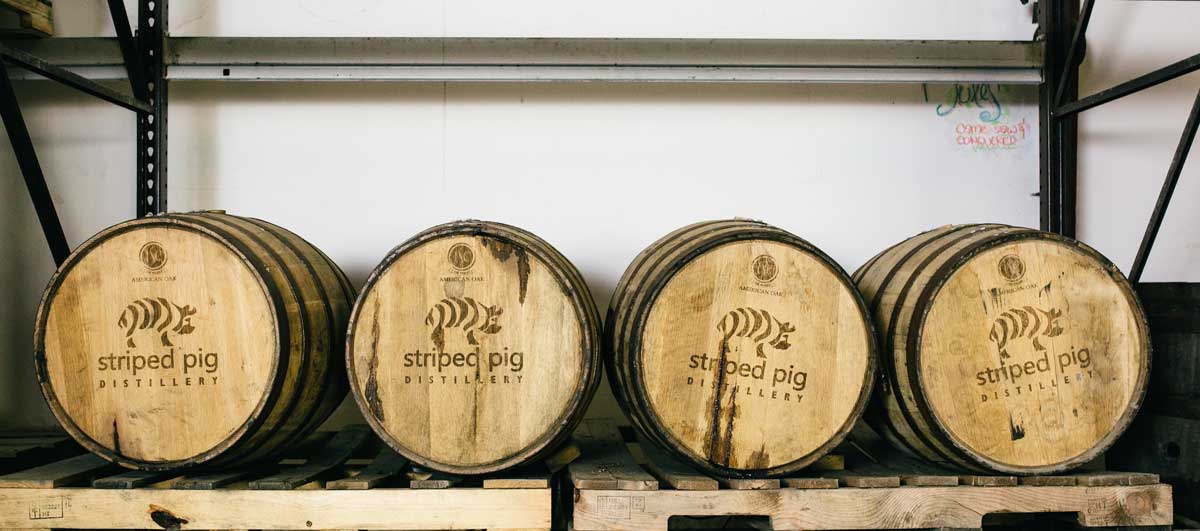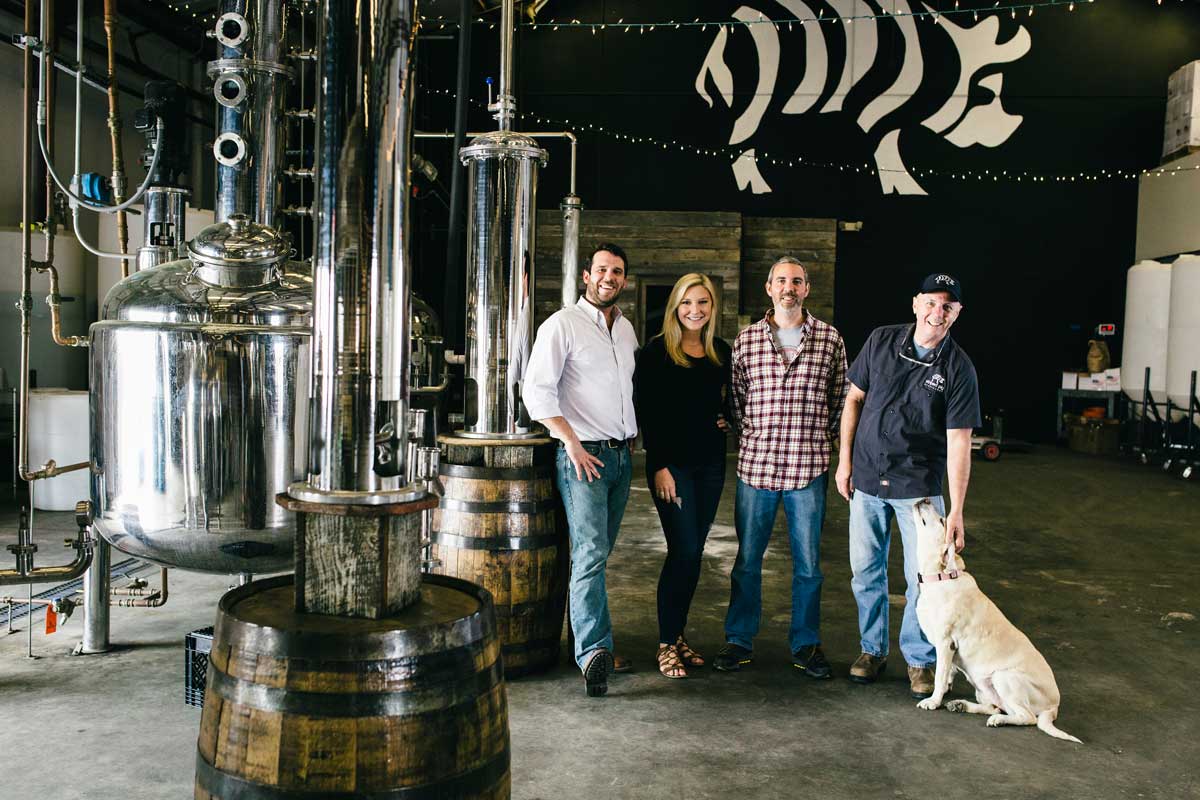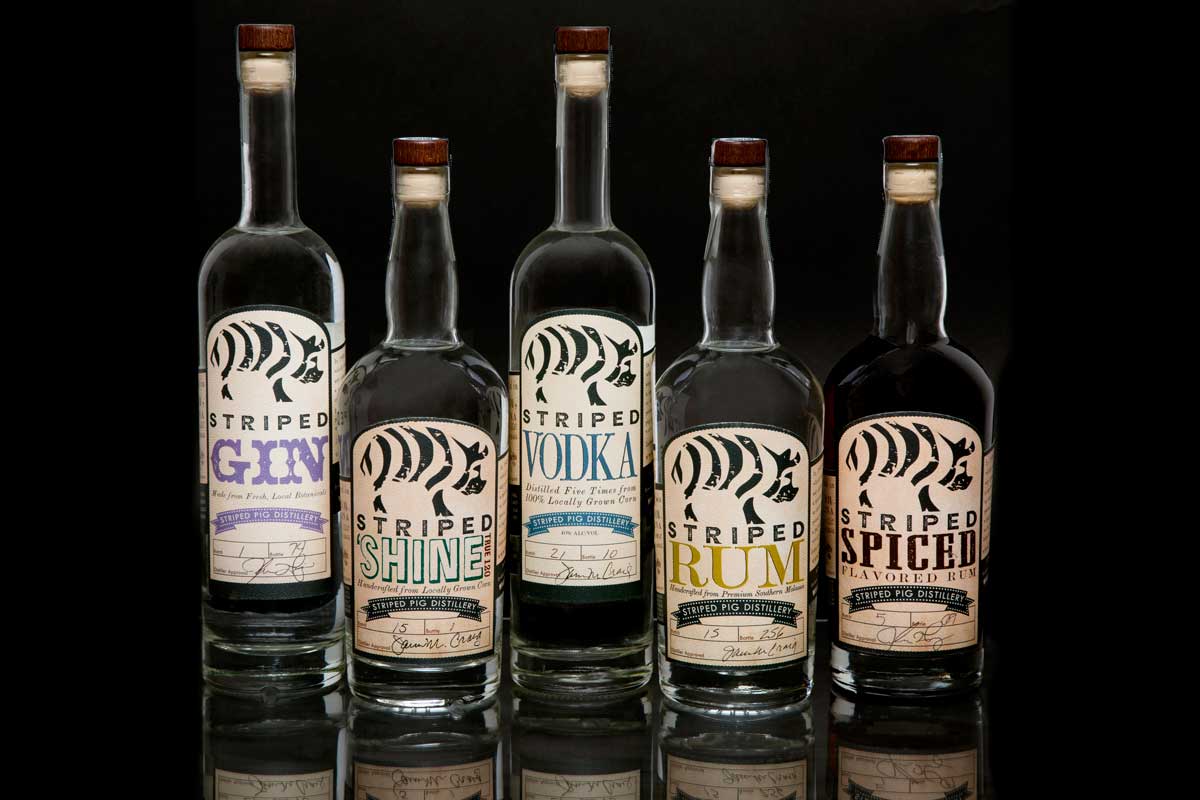Striped Pig Distillery Visit
As many of us know, a few things are required to make a bourbon a bourbon: 51% corn, new charred oak barrels, minimum and maximum proofs, and time. For a new, fledgling distillery, time is not always on your side.

As many of us know, a few things are required to make a bourbon a bourbon: 51% corn, new charred oak barrels, minimum and maximum proofs, and time. For a new, fledgling distillery, time is not always on your side. We see many younger distillers – and good ones – sourcing juice from other distilleries with larger, older stores of product while they wait for their distillate to age long enough to produce something more drinkable. Sure, technically you can throw white dog into a new charred oak barrel and pour it out a few days later and call it bourbon, but it will likely taste like what came in the plastic jugs we drank in college: bilge. The folks at Striped Pig Distillery down in Charleston – Charleston’s first post-Prohibition distillery – recognize this challenge and have stuck to their guns and refuse to push out a mediocre product. As Striped Pig’s Head Distiller, Johnny Pieper said, “If it tastes like shit, don’t put it in my bottle.”

I had the pleasure to sit down in the tasting room with Johnny, Juliana Harless, the distillery’s two brand-new interns, and, of course, Maggie the Lab, to talk whiskey, distilling, and all things Charleston. Johnny and his colleagues at Striped Pig started the distillery about three years ago with the mission to build a whiskey program focused on bourbons and ryes. Being level-headed folks, they realized that bourbon is not made in a day, a month, or even a year or two. Quality bourbon takes patience, time, and more patience. However, a distillery does not come cheaply, so Striped Pig set out to make its foothold in the local market by crafting younger clear spirits that were designed for use in cocktails to complement Charleston’s burgeoning cocktail culture.
With a focus on spirits that work well in cocktails and keeping everything as locally sourced as possible (molasses from Savannah is the only non-South Carolina product they use), Striped Pig has endeared itself to the people – and the bartenders and mixologists – of Charleston. The distillery’s current repertoire features gin, a vodka, white rum, spiced rum and shine. (Even though they list an Irish-style whiskey on their website, this product will likely not be released again since they want to focus more on the longer aged bourbons and ryes. Johnny indicated they put this one on the market initially to replace local folks’ taste for Jameson, which, apparently, people drink a lot of in Charleston. Go figure.)

The Gin (86 proof): Though bourbon is my first love, gin is also very dear to me (and no, not only in summer). The Striped Pig gin features notes of orange, juniper, and lavender. The gentler florals of the lavender along with the slight zest of the orange make this gin the perfect complement for a cucumber gimlet. I sampled their “Carolina Grapefruit” cocktail – 1.5 oz. gin, 4 oz. grapefruit juice, lime squeeze – and the softness of the gin cushions the tartness of the grapefruit yielding a wholly pleasant and refreshing drink. Great for mixing up in a pitcher for summer porch sipping.
The Vodka (80 proof): As bourbon loyalists, many of us think vodka tastes like nothing, smells like nothing and is supposed to be that way. Johnny takes issue with this view because if you’re drinking anything, it should taste like something. In comes the Striped Pig vodka, which is most certainly a corn vodka, as it yields those sweet nutty flavors we know well from bourbon and white dog. The alcohol isn’t overpowering (not too hot) and it’s a good, clean vodka for any cocktail, sweet or savory.
The Rum and Spiced Rum (80 proof): I am not a rum person. I can appreciate it, but it is just too sweet for me. The Striped Pig rum is made from blackstrap molasses out of nearby Savannah and imparts a nutty, butterscotch flavor which I have not experienced in rum before. It’s a nice change. They also carry a Spiced Rum, which, to me, tastes like Christmas: allspice, clove, brown sugar, cinnamon. I think this one would go well in egg nog. (Pro tip: put bourbon and rum in your egg nog this Christmas. Trust.)
The Shine (120 proof): Our heated discussion about the wrong and right ways to do shine was a highlight of my visit. Being from Kentucky, I know people who still do it the old-fashioned (albeit not too lawful) way of making shine which yields a super hot corn liquor. Moonshine is not meant to be low in proof, so I immensely appreciated Johnny’s insistence upon making a “historically accurate shine” made out of three ingredients: corn, yeast, water. I am sure everyone has seen the rapidly growing section of the liquor store that purportedly sells moonshine (and in a rainbow of flavors). Well, folks, I am afraid this is just well-packaged corn liquor (and no, just because it’s sold in a Mason jar doesn’t make it a real shine). Striped Pig’s shine is surprisingly smooth for such a high proof and, frankly, it should be that way. You can use this to heat up some cocktails, but I suggest just cutting a hole in a watermelon, shoving a bottle in, and being the most fun person at your picnic this summer. Just eat your fruit responsibly.
The Future (bourbon and rye): As I mentioned, and as you all know, bourbon – especially decent bourbon – takes time. Striped Pig is currently aging barrels destined to be bourbon and is consistently, albeit slowly, developing its whiskey program. There have been a few small, very limited releases available only at the distillery (via ticketed admission), but the responses have been positive. Though I did not have the opportunity to taste one, I will be on the lookout for their bourbons in the next few years.
The focus at Striped Pig does seem to be on producing a quality product. There is no obsession with thermometers and hydrometers in the production areas; everything is done by sight, taste, feel, and intuition. There is no blending of heads and tails into subsequent runs, only an extreme concentration of what is coming out of the still and knowing when the cuts are needed. Johnny realizes that the bourbon drinker of 2016 is much more educated and discerning which, for a distiller, can be a blessing and a curse. “It’s like making bar-b-que: if you cut corners, you’ll be able to taste it.” As an amateur bourbon enthusiast and expert bourbon consumer, it’s a boon. I will be watching them.
